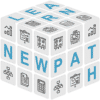There are many ways to use social media in education. We had grouped them into three broad categories of use, knowing fully well that these categories are not watertight containers. Indeed, some of the proposed uses cut across several categories.
- Identify content or practices that the teacher will want to use directly in his or her classes.
- Facilitate communication with and among students through technologies with which they are already familiar
- Provide students with learning activities where they create content on their own or in collaboration with others.
1. Locate relevant content, find something to build on
Social media can be a source of relevant content for training. Here are the most common uses:
- Find videos related to the course material. (Example Facebook Watch , Search with hashtags)
- Find photographs that may accompany some of our documents or slideshows presented in class.
- Regularly consult wikis and blogs on the topics we teach, so that you can suggest certain articles to students.
- Join virtual communities (possibly via Twitter, Facebook, LinkedIn and many others) that share our disciplinary or pedagogical interests.
2. Foster communication with and among students
Facebook for classes
Why not. While it’s tricky to become a Facebook friend of your students and several authors suggest avoiding it, that doesn’t mean Facebook can’t be used in an educational context.
Jim Pettiward proposes to create a fan page for each course on Facebook, to which students subscribe. It’s a way to communicate with students and avoid the uncomfortable situation of having them as Facebook friends. Through the fan page, the teacher can communicate assignments and deadlines, issue reminders, answer student’s questions for the benefit of the whole class, and allow students to contribute to the course page by posting their findings and communicating with each other about the topics covered in the course.
Gloucestershire College uses Facebook in this way. The main uses that seem to be made of it are for reminders of course events, such as assignments and deadlines, and for peer and teacher support. Time has been set aside for teachers to answer questions on the course page. This way of using Facebook mimics features typically found in digital learning environments. The advantage is that students use Facebook on a daily basis, which is not the case for other comparable platforms. It’s a way to reach students where they are rather than asking them to come to us.
LinkedIn for the creation and maintenance of a professional network.
In some training contexts, particularly continuing education or business training, the creation and maintenance of a professional network may be desirable as early as the study period. LinkedIn is the ideal tool for this. Since each user’s personal profile will follow him/her as long as he/she wishes, as well as his/her membership in the groups he/she decides to join. Through a LinkedIn group, students can communicate with each other long after they have finished their studies. They get in touch with other students who have taken the course before or after them.
In addition, the library offered by LinkedIn references more than 14,000 courses. Business, creative tools, technologies… There’s something for everyone. The most popular is everything related to career development (Time management, Management, Leadership…). Courses focused on job search are in high demand. Among the most popular training courses are also practical courses on the use of Excel or Python in particular. So you can train in a wide range of areas via the platform, provided you have access to it. For members of the network, the first month is free, then you will have to take out a subscription per month to take advantage of the catalogue.
3. Involve students directly
Emmanuelle Erny-Newton, from the media education network, proposes to use social media to pursue the following goals.
- Develop critical thinking: by equipping students to assess the credibility of sites and information on the Internet and then giving them assignments to practice doing so. This is an essential component of what is now called information literacy.
- Develop creative thinking: the social web encourages the meeting and linking of ideas that are not immediately linked together. By browsing the social web, you are exposed to a wide variety of ideas and points of view that you can recompose or draw on to develop original ideas.
- Have authentic exchanges: by exposing one’s ideas to the real world rather than to one’s teacher or group of students, one can receive diverse and authentic feedback because it is disinterested.
A common suggestion is to ask students for certain assignments that are specifically designed to be published on a social website chosen with the context of the course in mind. A few examples for inspiration:
- Produce and post videos on YouTube to explain concepts learned in the course
- Publish on Flikr photos taken during fieldwork with comments to demonstrate understanding of the concepts related to the photos the students took
- Write and publish articles on the course topic in blogs or public wikis.
The fact that students know that their work will be made available not only to the entire class, but to the entire Web. This would have an impact on motivation and the quality of the work rendered. Schoolwork can then have a real impact on the world and be reused by another person on the other side of the planet. In the minds of students, it becomes much more than just a school assignment.
Criticisms and limitations of social media in education
Of course, enthusiasm for the use of social media in education comes with its share of criticism.
- The vast majority of the discourse on the use of social media in education is based on opinion, not on rigorous research evidence.
- The majority of social media users are pure consumers, not content producers.
Several researchers in cognitive science, education and neuroscience are also concerned about the effect of young people’s immersion in social media on their attention and concentration skills. The use of fast-paced social media (Twitter, Facebook, YouTube, etc.) would therefore have side effects when used over the long term. It is best not to put novices in such situations unless they are well supervised.
Beginners don’t have enough prior knowledge to take full advantage of a wide selection of information to explore freely. Rather, it is recommended that students begin with planned and supervised activities to build a prior knowledge base. Once this base is established, it may be appropriate to place them in a more exploratory and informal environment.
Another criticism of the use of the Social Web in education is that the choice of a teaching method should be based on the knowledge to be learned, and not on fashions or trends. It is essential that the use of social media in education serve learning objectives and not just to respond to a taste for technology.

